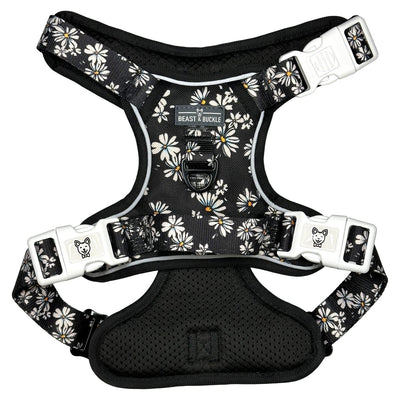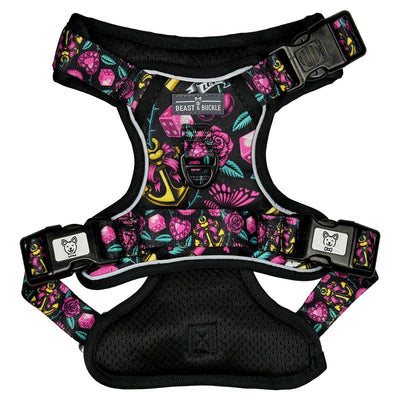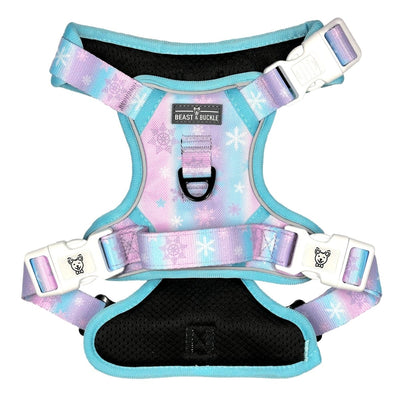The Ultimate Guide on How to Train Your Dog

Training a dog — whether it’s a brand new puppy or an adult shelter dog — has a lot of benefits. Beyond saving your home from avoidable destruction, an effective training regimen can provide extra stimulation and enrich your dog's life, maximize their safety in unpredictable situations and help you develop an unbreakable bond with your furry companion. Of course, you probably already know the importance of instilling manners in your pet. That’s why you want to know how to train a dog correctly to ensure your four-legged friend gets off on the right foot (or paw, rather).
In this guide, we’re covering the basics of effective dog training. We’ll discuss the must-have tools you need to get started, the importance of using positive reinforcement and the fundamental skills every dog should know. We’ll also provide a few helpful tips to set you and your pup up for training success.
Should You Pay for Dog Training or DIY?
One of the first training-related questions you'll ask yourself as a new dog parent is whether you want to seek guidance from a professional trainer or take matters into your own hands. Both options have their unique pros and cons.
Learning how to train a dog from an experienced professional can provide valuable enrichment and socialization opportunities for your dog and help you sidestep some of the more frustrating challenges that new dog owners may face when training their dog. Additionally, a professional trainer can help with behavior modification training, which includes curbing unwanted behaviors such as destructive chewing and excessive barking.
There are a few different options for professional training programs:
- Group classes where a trainer teaches a larger group of dog owners and their furry friends
- Private lessons where a trainer meets individually with you and your dog
- Day training, which is when a trainer comes to your home and does the training for you
- Dog board and train programs, which is when your dog stays with a trainer for two to three weeks and receives individualized training during that time
On the other hand, learning how to train your dog by yourself can be deeply rewarding and help you better understand the needs of your four-legged companion. Plenty of people successfully train their dogs without the help of a professional, saving money on training costs and increasing the special bond they have with their dog in the process.
Getting Started: Dog Training Supplies and Gear
You don’t need a lot of training gear to teach your dog basic obedience, but there are a few basic tools that will make your training journey easier and more effective.

What to Buy:
- Training Guide: If you aren’t going to hire a professional dog trainer to teach you the ropes, you’ll definitely want to read some literature on the topic before you get started. Check out this list of expert-approved picks, which includes books on positive reinforcement (Karen Pryor’s Don’t Shoot the Dog: The Art of Teaching and Training) and evidence-based training (How to Behave So Your Dog Behaves by Dr. Sophia Yin).
- Flat Dog Collar: Chances are, you already have a cute dog collar for your furry friend. But if not, you’ll want to choose a flat dog collar made from a durable material, such as nylon. While you’re at it, pick up blank dog tags for your pet and have them engraved with your contact information at your earliest convenience. That way, strangers will know who to call in the event your four-legged bestie ever becomes lost.
- Dog Leash: Teaching your dog how to walk properly on a leash will undoubtedly be on your list of dog training to-dos. To make the experience more enjoyable for both you and your pet, be sure to pick a comfortable yet sturdy dog leash. Most experts recommend choosing a four to six foot dog leash that allows your canine companion freedom of movement without letting them wander too far from your side. Don’t forget to attach a dog poop bag holder to your pooch’s leash to make cleanup duty quick and easy.

- Dog Harness: More and more, dog owners are moving away from the classic dog collar-and-leash combo in favor of stylish dog harness and leash sets. Putting your dog in a harness not only maximizes their safety and comfort on walks, but also helps them avoid neck injuries when they pull too hard against the leash. If you have an excitable pup that loves to pull (or goes ballistic when they see a squirrel or another dog), consider a no-pull dog harness that discourages pulling by redirecting your dog’s attention back to you.
- Clicker: A clicker (aka a marker) is a device that communicates the exact moment your dog does something you like. For example, if you instruct your dog, “look at me,” you’d click the device the moment he turns his attention to you and reward him with a treat. While clickers aren’t absolutely necessary for successful dog training — a simple “yes!” followed by a treat will also work — they can make your training sessions a lot more efficient by eliminating potential confusion.
- Training Treats: While some dogs prefer toys and attention to treats, the vast majority of them are highly food-motivated. The best training treats are small (think pea-sized servings), smelly and completely irresistible to your pooch.
Building a Solid Foundation of Training with Positive Reinforcement
Although there are many dog training styles to choose from, positive reinforcement-based training is arguably one of the more effective (and humane) ways of teaching a dog basic obedience. The premise is simple: By rewarding your dog for positive behaviors, your eager-to-please pup is more likely to repeat the action in the future. Clicker training is a form of positive reinforcement training because you’re marking the desired action and following up with a reward.

For positive reinforcement training to be successful, you need to keep three main principles in mind: timing, consistency and motivation.
Timing
Timing is everything when it comes to training your dog. When your dog does something you like, it’s important to “mark” the moment — either with a clicker or an exuberant “yes!” — within one to two seconds of the desired behavior. Otherwise, your dog may not associate the reward with the behavior you want.
Consistency
There can be no gray areas with your training — the rules must be clear to your dog and everyone in your household. For instance, let’s say you’re teaching your dog how to walk on the left side, but your spouse is walking them on the right. Should your dog walk on the right or the left side? Your criteria for certain behaviors must be clear. Otherwise, your dog will get confused and their training will suffer as a result.
Motivation
Whether you’re house-training a puppy or teaching an adult dog to sit and stay, it’s important to use rewards that are motivating enough for your dog to continue striving for them in the future. If your dog isn’t food motivated, consider alternative rewards, such as petting and playtime.
Once your dog has learned the desired behavior, you can start doling out rewards intermittently. For example, let’s say you’re teaching your dog to sit. At first, you’ll reward your dog four out of every five times they follow a command to sit. Over time, you’ll decrease the amount to three out of five times and so on until your dog only receives rewards at random intervals.
Reward your dog with verbal praise every time, even if you aren’t rewarding them with a treat. This will reassure your dog that they’re doing the correct behavior and keep him striving for the high-value reward.
Controlling Consequences with Negative Punishment
Positive reinforcement training focuses primarily on reinforcing good behaviors in your dog — but that doesn’t mean you should let bad behaviors go unpunished. Your dog needs to know that certain behaviors aren’t acceptable and that there are consequences when the rules get broken.
Negative punishment is one way you can deter your dog from repeating undesirable behaviors. With this strategy, you simply withhold the reward when your dog does something you don’t like.
For example, let’s say your dog has a bad habit of jumping on you when you walk in the door. Rather than give your dog the attention she desperately craves, you should turn your back on your dog and ignore her until she calms down. According to the American Kennel Club, this strategy is more effective than yelling at your dog or pushing them away, which many pups interpret as a game of wrestling.
5 Fundamental Skills Every Dog Should Know
Dog training is essential for many reasons, not least of which is that it can make both your life and your dog’s life easier. When your dog has a good grasp on basic obedience, every activity you do together — whether it’s walking around the neighborhood, taking a road trip or relaxing at home — is more enjoyable and less stressful.
Here are a few fundamental skills to teach your dog to enhance their safety, increase their self-confidence and turn them into the well-mannered pet you’ve always wanted.

1. Sit
“Sit” is usually one of the first commands we teach our pets, and with good reason. Not only is this trick useful for buckling your pup into a harness and hooking them to the leash, but it’s also helpful for discouraging unwanted behaviors such as jumping and door dashing.
Here’s how to teach your pup to sit:
- Hold a tasty treat right in front of your dog’s nose.
- Bring the treat back and over your dog’s forehead.
- As your pup’s head moves back to follow the treat, her rear end should hit the floor.
- Use a clicker or an exuberant “yes!” to mark the moment and give her a treat.
- Introduce the verbal cue when your dog no longer needs to be lured into a sit.
2. Down
Teaching a dog to “lie down” is similar to teaching them to “sit.”
- Start with your dog in the sitting position.
- Hold a small training treat in front of your dog’s nose and slowly lower it to the floor, moving your hand slightly outwards and away from your dog’s nose.
- Once your dog’s elbows hit the floor, click and give your dog a treat.
- Introduce the verbal cue when your dog no longer needs to be lured into a down position.
3. Stay
“Stay” is one of those commands that is easy to overlook, but extremely important to your dog’s safety. Without understanding the “stay” command, your dog could bolt out the door or dart after an animal on a walk.
Here’s how to teach your dog stay:
- First, teach your dog a release cue that lets them know they’re free to move. Most dog owners say “okay” to release their dog, but you can also use words like “free” or “release.”
- Once your dog knows the release word, ask them to sit or lie down.
- Hold your hand out palm forward and say the word “stay.”
- Wait one to two seconds before giving them a treat. You want to acknowledge success before your dog moves.
- Gradually increase the duration a few seconds at a time.
- Once your dog can stay for 10 seconds, you can start adding distance to the stay.

4. Come
Anyone who has ever had to embarrassingly capture their own dog at the dog park or bribe their pet to come back inside from the backyard knows the value of teaching a dog to “come.” However, a reliable recall is more than just a skill of convenience. It can also save your dog’s life if they end up in an unsafe situation.
The best way to teach “come” is, of course, with enticing treats or toys.
- Start by showing your dog a toy or treat and praising them when they come to you.
- Repeat this a few times before adding in your verbal cue (e.g., “come” or “to me”).
- Gradually increase the distance between you and your dog.
5. Loose Leash Walking
Getting your dog to walk without straining at the leash might sound like a distant dream, but rest assured that it’s within your grasp. You just need the right tools and approach (and lots of patience).
Here are a few tips for loose leash walking:
- Tire your dog out with a game of fetch or tug before your training sessions (it seriously helps!).
- If your dog is tug-happy, use a no-pull dog harness. It will help to discourage pulling, take the strain off your pup’s neck and provide you with greater control over your dog.
- When your dog runs in front of you, try changing directions, calling your dog to you and treating them when they reach your side.
It’s Never Too Late
Although puppyhood is generally considered the ideal stage for dog training, most training experts agree that no dog is ever too old to learn basic obedience. With the right gear, a positive approach and a lot of patience, you can teach your canine companion a wide range of skills that will enrich their life — and yours!
Image Credits
thka/Shutterstock.com
Cookie Studio/Shutterstock.com
New Africa/Shutterstock.com
Firn/Shutterstock.com
otsphoto/Shutterstock.com
Fractal Pictures/Shutterstock.com










Leave a comment